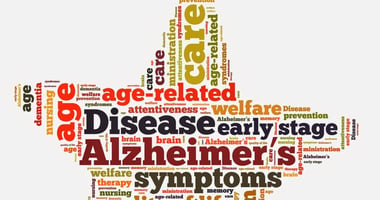Midlife obesity is a risk factor for dementia that could contribute to higher future dementia...
Dementia at Younger Ages More Prevalent Than Previously Estimated, Meta-Analysis Suggests

The development of dementia in people between the ages of 30 and 64 years (known as young-onset dementia) is more common than previously estimated, according to a report published Monday in JAMA Neurology. The new report estimates young-onset dementia affects some 3.9 million people globally.
“Although this is higher than previously thought, it is probably an underestimation owing to lack of high-quality data,” wrote lead author Stevie Hendriks, M.Sc., of Maastricht University in the Netherlands and colleagues. Specifically, “more data are needed from low-income countries as well as studies that include younger age ranges,” they wrote.
Hendriks and colleagues searched the literature for population-based studies on the prevalence of young-onset dementia published between January 1, 1990, and March 31, 2020. A total of 74 studies with more than 2.7 million patients were included in an analysis that looked at the prevalence of dementia in adults grouped by five-year age blocks beginning at age 30 through age 64. (The authors noted that most of the studies included in the analysis were conducted in Europe and in older groups in Asia, North America, and Oceania.) Specific diagnoses analyzed included Alzheimer’s disease, frontotemporal dementia, and vascular dementia.
They found an overall global age-standardized prevalence of 119.0 per 100,000 population in the age range of 30 to 64 years, corresponding to 3.9 million people aged 30 to 64 years living with young-onset dementia in the world. The majority of cases occurred when people were between the ages of 45 and 64 years; the prevalence of dementia in people aged 30 to 34 years was found to be extremely rare at about 1.1 per 100,000 but rose to 77.4 per 100,000 among people aged 60 to 64 years.
The most common diagnosis was Alzheimer’s disease, followed by vascular dementia and frontotemporal dementia. However, in the lower age ranges, until 50 years of age, vascular dementia prevalence was the highest, followed by frontotemporal dementia and Alzheimer’s.
“Most dementia care is geared for older patients, and as a consequence, services are rarely available to address the needs of someone diagnosed with dementia in their 50s who has dependent children at home and a spouse who must continue working. Understanding the prevalence and incidence of [young-onset dementia] is a first step in addressing this challenge,” wrote David Knopman, M.D., of the Mayo Clinic, in an accompanying editorial. “[A] rationally derived estimate of dementia prevalence across the population aged 30 to 64 years provides a basis for initiating more efforts to improve methods for timely diagnosis and to address the unique needs of [these] patients.”
For related information, see the Psychiatric News article “Measurements of Brain Age May Help Target Therapy.”
(Image: iStock/Xesai)
US Remains Under Public Health Emergency Due to COVID-19
The U.S. Secretary of Health and Human Services on Tuesday signed a renewal of determination that the public health emergency due to the COVID-19 pandemic remains in effect.






